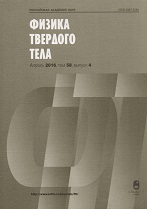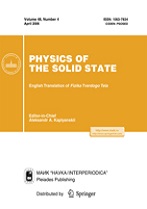|
This article is cited in 10 scientific papers (total in 10 papers)
Surface physics, thin films
Adsorption of oxygen on low-index surfaces of Ti$_{3}$Al alloy
A. M. Latyshevab, A. V. Bakulinab, S. E. Kul'kovaab
a Institute of Strength Physics and Materials Science, Siberian Branch of the Russian Academy of Sciences, Tomsk, Russia
b Tomsk State University
Abstract:
The atomic and electronic structure of the three surfaces of Ti$_{3}$Al alloy–(0001), (1$\bar1$00), and (11$\bar2$0)–is calculated by the projector augmented-wave method in the framework of the electron density functional theory. The surface energies are estimated as a function of the chemical potential of aluminum, which made it possible to construct a stability diagram for the surfaces under study. Adsorption of oxygen on differently oriented surfaces of the alloy is studied. It is found that the most preferred positions for oxygen adsorption are hollow positions on the (0001) and (11$\bar2$0)$_{\mathrm{Ti}-\mathrm{Al}}$ surfaces and bridge positions on the (1$\bar1$00)$_{\mathrm{Ti}-\mathrm{Al}-1}$ surface. Structural and electronic factors that determine these energy preferences are discussed. It is shown that regardless of the orientation of the surface, oxygen “prefers” titanium-enriched positions. The effect of oxygen on the atomic and electronic structure of low-index surfaces is discussed. It is found that at low concentrations of oxygen, the formation of its chemical bond with titanium and/or aluminum atoms in the surface and subsurface layers leads to the appearance of low-lying states split off from the bottom of the valence bands of metals, which is accompanied by the formation of a pseudogap and the weakening of Ti–Al metal bonds in the surface layers.
Received: 14.02.2017
Citation:
A. M. Latyshev, A. V. Bakulin, S. E. Kul'kova, “Adsorption of oxygen on low-index surfaces of Ti$_{3}$Al alloy”, Fizika Tverdogo Tela, 59:9 (2017), 1828–1842; Phys. Solid State, 59:9 (2017), 1852–1866
Linking options:
https://www.mathnet.ru/eng/ftt9472 https://www.mathnet.ru/eng/ftt/v59/i9/p1828
|


| Statistics & downloads: |
| Abstract page: | 64 | | Full-text PDF : | 28 |
|





 Contact us:
Contact us: Terms of Use
Terms of Use
 Registration to the website
Registration to the website Logotypes
Logotypes









 Citation in format
Citation in format 
